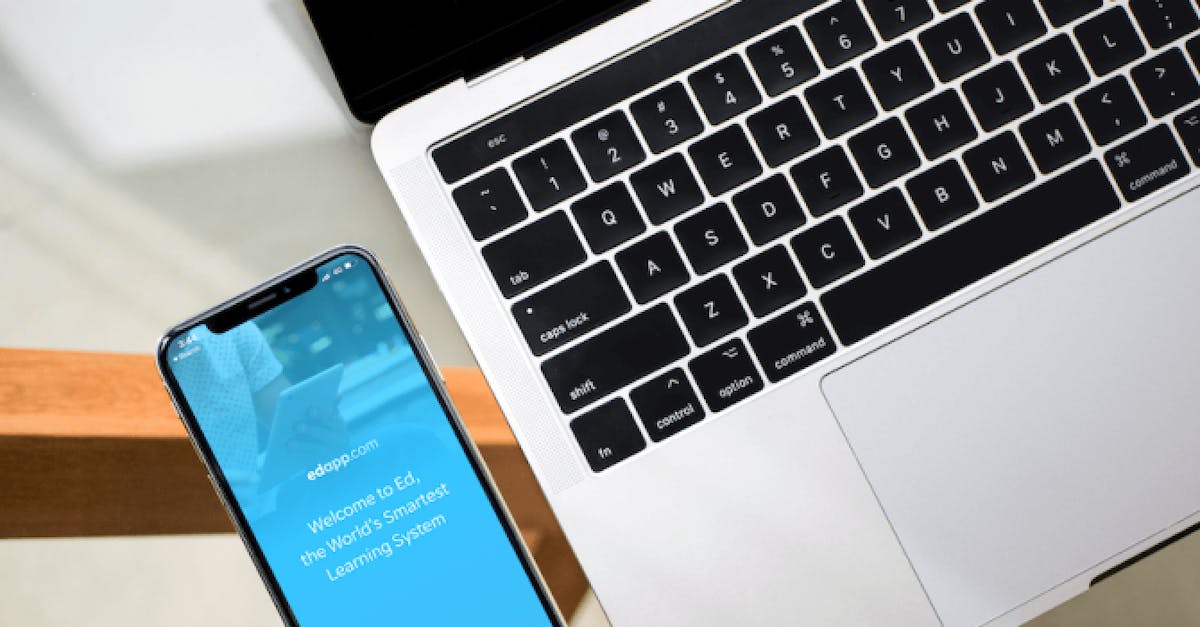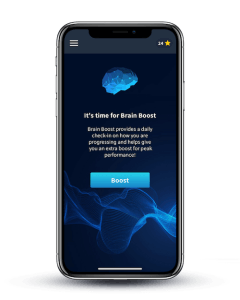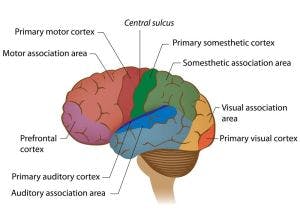Microlearning Languages

Learning a foreign language undoubtedly poses many challenges and obstacles for learners along the way. Instead of attempting to aimlessly grapple with these, steps can be taken to develop effective strategies to counter these issues.
Learning a language can often result in cognitive overload for learners, meaning that they are unable to withhold many pieces of new information at once. Studies conclude that the average human brain can only withhold 3-5 new pieces of information at any given time.
1. How to start learning a language
1. Set language-learning goals
Setting goals when learning a language is essential to measure progress and maintain motivation.
2. Use the language as much as possible, every day
Use the language to think and speak in as much as possible. Microlearning allows for this as micro modules are available to learners at any time, anywhere. The mobility of the training courses provides countless benefits to learners, accommodating them in their learning journey.
3. Practice in real-life
Practicing a language in real-life situation is essential to be able to apply your learning. It can sometimes be difficult to do this, which is where microlearning saves the day. Micromodules provide learners with real-life simulations, making it just as effective as using it in the outside world.

4. Learn about the culture
Learning about the culture of the country of the language’s origin can help provide context to what you’re learning. This motivates learners and develops a stronger relationship between them and their learning.
5. Collaborate with others learning the same language
Peer learning is particularly useful when learning a foreign language as learners can share their knowledge with others, simultaneously learning from others. This closes any potential gaps in learning as people can share their areas of strength whilst improving their areas of weakness.
6. Know your motivation
It is crucial to commit to learning the language you have decided on. If you understand your motivation and reason for learning the language, you are more likely to stay motivated for a prolonged period of time.
7. Find a partner
When you have a partner to rival against in the mission to m learn a language, you are able to remain competitive and motivated to be the better learner. Having something who you can speak to, where you are both on the same level of competency, assists in further strengthening the relationship you have with learning the language.
8. Talk to yourself
Better than attempting to absorb knowledge off the page and into your long-term memory, talking to yourself is beneficial to develop conversational skills in your desired language. Talking to yourself in a foreign language familiarises yourself with essential skills, words and phrases, to develop fluency and build confidence for the next time you speak with someone.

9. Ensure relevancy
Learning from textbooks can often expose you to phrases which are too formal or are not used in a conversational setting. This is why it is essential to talk to people for the maintenance of a relevant learning process.
10. Enjoy yourself!
When you craft an enjoyable and entertaining way to learn the language, you tend to be able to withstand a longer period of ongoing learning, absorb more information and are more likely to go back to it after a shorter period of rest time. You could write and record songs, write and enact a movie script, or whatever else you can come up with!
11. Let out your inner child
Learning the way children do is most beneficial for adults learning a new language. This is simply through adopting childlike attitudes, whereby self-consciousness is reduced and willingness to make mistakes is boosted. As adults, mistakes become taboo, often resulting in the avoidance of certain unstable situations, such as learning a foreign language. Learn to admit you don’t know everything about the new language and you’re on your merry way to learning it all!
12. Say goodbye to your comfort zone
Learning a language is impossible without putting yourself in a new and unfamiliar situation. Make the most of this by building up enough courage to order food or perhaps asking for directions. In time, this will expand your comfort zone to cover various areas, useful to you in the long-run. Don’t be afraid to make mistakes, as different difficulties will undoubtedly be encountered. There are various components of a foreign language, whether it is grammar or syntax, requiring you to be flexible and agile in your learning.
13. Listen
Language learning is made significantly easier and is much more seamless when you learn to listen before learning to speak. Exposing yourself to accents and other components of the language is essential to fully grasp the learning process. For your next Friday night movie, opt for a movie in a foreign language!
14. Observe others speaking
Foreign languages require much more than just vocal pronunciation, also proving physical pronunciation and intonation to be crucial. Try to situate yourself somewhere that you can watch a native speaker of the language in person. If this is a challenge, watch foreign films and TV.
15. Immerse yourself
Lastly, it’s time to jump into the language learning universe and take a maximalist approach; practice every single day, even for just 10 minutes. Think in it, write in it, speak in it and put it into practice. Write emails to yourself in it, listen to music in it and watch TV in it. A great tip is to also begin by reading children’s books to develop a foundational understanding of the basics.
2. Why Should You Do It?
Firstly, a Canadian piece of research in the science of language proves that Alzheimer’s and dementia are likely to develop later in bilinguals than monolinguals. This is just a small bit of evidence out of myriad like studies that promote learning a foreign language to keep your brain active and healthy.
Secondly, most of the one billion non-native English-speakers around the world would rather speak in their own language if it were a choice. This is why it is useful to be able to speak in foreign languages, to accommodate and put these people at ease. When travelling abroad, it is much more immersive and worthwhile when you are able to communicate with, understand and interact with the situations you are in, no matter where you are in the world.

3. Learning Boosters After Some Time Away
If you have abandoned your study for a bit and need to get back onboard, there are some boosters to achieve exactly this!
Step 1: Train your ears with pronunciation.
Step 2: Revise your vocab using images.
Step 3: Read a story in chosen language to naturally refresh grammar.
Step 4: Refresh study before sleeping.
Step 5: Start speaking!
4. What is the fastest way to learn a language?
Fast-tracking language learning doesn’t have to mean endless hours of drilling grammar rules or memorizing textbook phrases that hold little relevance to the real world. The quickest way to build up a vocabulary bank is to chunk down language learning. Chunking vocabulary into commonly used phrases, and rearranging them in different sentence contexts, expedites the retrieval process by bypassing individual word recall and enabling learners to retrieve vocabulary groupings.
Furthermore, as linguistics expert Stephen Krashen points out, when grammatical rules are embedded into chunked vocabulary, we are able to more effectively ‘absorb’ them, much as a child would unconsciously acquire language.1 If the aim is to reach 80-20 fluency as quickly as possible, vocabulary building should specifically target the most commonly used phrases, with the aim of reaching 1000 words; as polyglot Teddy Nee advises, this means learning the most frequently used verbs, tenses, 6W1H phrases (What, Why, Where, Who, When, Which, How) and pronouns.2 Add spaced repetition into your language learning mix and you’ll be conversing with native speakers in no time!
5. How Microlearning Helps
Microlearning is the most suitable strategy to employ when undertaking the study of a foreign language. If you are not completely familiar with what microlearning is or how it can impact your learning capability, look no further than this article.
Microlearning breaks down complex knowledge into simplified, bite-sized pieces of information for easy digestion, absorption and retention of information. Knowledge is much more likely to be recalled by learners when it is immediately embedded into long term memories, rather than staying temporarily.
6. Best Apps and Tools For Language Learning
There are various apps and organisations on the market existing to assist learners in linguistic development. We have sifted through them to select some of the best.
1. Rosetta Stone: Rosetta Stone assists in the building of conversational skills, enabling learners to thrive in real-world conversations. The app is downloadable on iOS or Android, making it a flexible and agile tool to use.
2. Duolingo: Duolingo is built around a gamification approach, whereby learners gain points and prizes for lesson completion. Its interactive and responsive interface is appealing to learners and encourages them to see, hear and internalize the information they are exposed to.
3. Memrise: Memrise is a flashcard-style language learning platform, enabling learners to memorise words and phrases. Users can compete against each other to battle to be the best.
4. Babbel: Babbel is also game-like and interactive, allowing users access online and via mobile. It helpfully offers targeted exercises based on the learner’s individual needs.
7. Theories on the Origins of Language
There are many stories and vast ideas of how language was established but there is no straight answer. In light of this, we have gathered five of the oldest and most common theories of the origins of language. And yes, they’re names are legitimate.
1. The Bow-Wow Theory
This theory revolves around our ancestors beginning to speak by imitating the natural sounds around them. It says that first speech was onomatopoeic, however, the theory has been criticised due to a lack of words being onomatopoeic in the first place, as well as varying from one language to another.
2. The Ding-Dong Theory
This theory was favoured by Plato and Pythagoras, who believed that language arose in response to the surrounding world. In other words, the sounds people made where harmonious with objects in the environment. This has been criticised as there is no innate connection between sound and meaning.
3. The La-La Theory
Otto Jespersen was a Danish linguist who theorised that language developed from sounds associated with song, play and love. However, the theory fails to account for “the gap between the emotional and the rational aspects of speech expression” (Crystal, 2005).
4. The Pooh-Pooh Theory
This theorises that speech began with interjections, for instance, through expressions of pain (“ouch”), surprise (“oh”) and other emotions. However, Crystal (2005) further points out that these small noises “bear little relationship to the vowels and consonants found in pathology”.
5. The Yo-He-Ho Theory
This theory revolves around the idea that language first evolved from the noises evoked by heavy physical labour. However, it has been criticised for not providing an in-depth explanation of where words come from.
8. The Importance of Memory for Learning a Language
Memory plays a major role in every individual’s life. It helps us to remember the skills we have learned, to retrieve stored information, or recall a previous experience. However, the duration of retention depends on the type of memory and what type of information it is.
The most important categories of memory are long-term memory, short-term memory, and working memory. The first two can deteriorate due to old age, or a variety of clinical conditions. When learning a language, effective memory capacity is essential.

9. Memory Process
Memory is a subjective, active, reflective process of our previous experiences in life. They are generally three processes involved in the formation of memory:
- Encoding
- Storing
- Retrieving
Encoding: This is the first process involved in memory formation in the encoding of information. The process of encoding is subjective and selective and involves three factors:
- Content: The type of content to be encoded can be impacted by the following factors:
- Environment: These are the conditions under which encoding happens. The impact of these factors on memory is significant during the process of memorization. (Ex: Temperature, humidity, socio-economic conditions, etc). These conditions can either inhibit or stimulate the encoding process.
- Subjective: These are the variable factors that affect the process of encoding. The subjective factors include fatigue, motivation, interest, etc. These factors are important and need to be considered while designing a training program.
- The learner’s familiarity with the content.
- The degree to which the content is structured and organized.
- The size of the content.
- The subject of the content.
Storing: This is the second process wherein the encoded information is preserved for future use. In this process, the information is stored, transformed, and reorganized with new reference points.
The effectiveness of this process is measured by the duration of retention and the fidelity of the information stored. Information is stored based on three levels of memory:
- Long-term memory: This type of memory helps store and recall information later. After the data is received, it is forwarded to different parts of the brain and sorted by color, smell, etc. Emotions play a major role in the process of recall. Stronger the emotions caused by the memory, easier the recall of the event. Reinforcement of certain activities or knowledge by repeated exposure can strengthen long-term memory.
- Short-term memory: This type of memory, also called primary memory, stores information very briefly. These memories last for more than 20-30 seconds and then begin to decay rapidly. The duration of short-term memory can be extended by using rehearsal techniques – by saying something aloud and mentally repeating it.
- Working memory: This memory is important to hold and manipulate information mentally over a short span of time. This memory is the “go-between” short-term and long-term memories. Working memory is often confused with rote memory. This type of memory is used not just for standard memorization of information but using it later for a task. This type of memory is limited in duration and capacity. For example, implementing the steps of a recipe without looking at the cookbook. The working memory has several inter-linked components:
- Verbal-short term memory: This memory holds information that is expressed as sentences, numbers, and words.
- Visual–spatial short-term memory: This memory holds information such as images, pictures, and geographical location of places.
Retrieving: This is the process that involves accessing the stored information. This happens through the process of recall or recognition. The process of recall happens by remembering a fact, object, or event. It involves uncovering of information from memory. On the other hand, recognition is the process of associating an event or object that was previously experienced. It involves searching and retrieving several items from memory and then choosing the correct one from the multiple items retrieved.
10. Impact of Weak Memory on Learning
Problems in working memory can have an impact on learning. This is because the individual will have less space in working memory to organize and integrate new skills or knowledge. The impact of this is that the individual will have difficulties in following directions, organizing thoughts, learning procedures with multiple steps, or processing information.
Issues in long-term memory can cause problems in information recall. The individual may be disorganized, confused, and disoriented when presented with new learning material.
11. How to learn a language with EdApp
A microlearning platform, like EdApp, utilizes a spaced repetition strategy, meaning that information is repeated in intervals, allowing learners to learn without losing the knowledge they are exposed to. It does this by feeding the learner just the right amount of information gradually and reinforces information that the individual is particularly struggling with.
It allows for the personalization of learning, which is particularly important for the instilment of worthwhile learning, essential for the modern learner. Catering to the needs and preferences of learners is essential, especially in the fast-paced, technology-dictated lives we live.
To Sum Up
There are various factors which must be accounted for to achieve the most successful training outcome when learning a new language. We hope to have enlightened you and provided you with options and choices for learners to take on board when embarking on their language learning journey.
To learn more about the tips and tricks to learn a new language, watch this TED talk of polyglot and linguist Matthew Youlden, explaining easy steps to learn a new language and debunking popular myths!
You may also be interested in, https://www.edapp.com/blog/converting-short-term-memory-to-long-term/
References
Krashen, S. D. (1988). Second Language Acquisition and Second Language Learning. Prentice-Hall International.
Hooshmand, D. (15 December 2018). ‘Get Fluent Faster with Easier Words.’ available online, https://discoverdiscomfort.com/get-fluent-faster-with-easier-words/, retrieved 7 July 2020.
Author
Guest Author Daniel Brown
Daniel Brown is a senior technical editor and writer that has worked in the education and technology sectors for two decades. Their background experience includes curriculum development and course book creation.
